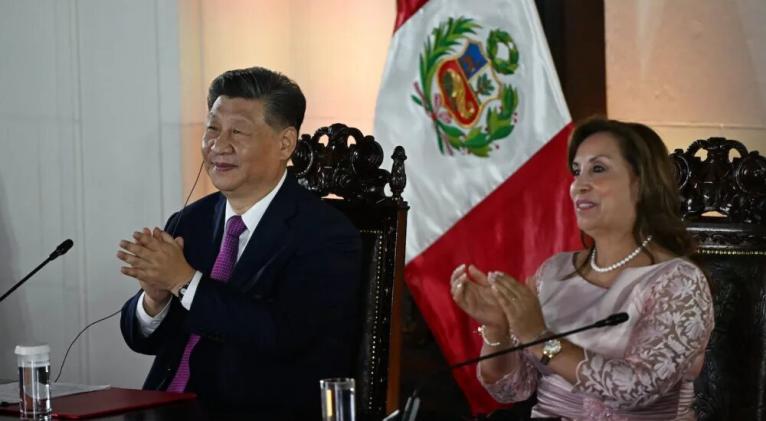What China Got Right in Latin America
especiales

It was one of those photos that says so much—how Washington’s diplomatic and economic presence has declined in Latin America, a region that the United States has long considered to be its unique zone of influence. In the group shot for November’s Asia-Pacific Economic Cooperation (APEC) summit in Lima, Peru, Chinese President Xi Jinping stood in the front row next to the host president, Dina Boluarte of Peru. Xi was beaming while in the back row, U.S. President Joe Biden cut a distant figure.
Xi had reason to beam. The summit was the unofficial ribbon cutting of a $3.6 billion Chinese-backed mega port in Chancay that will transport Peruvian and many other South American exports to Asia’s hungry markets. The massive infrastructure project marked not only a new stage in China’s decadeslong attempt to win over the Western Hemisphere, but also came at a moment when the United States has failed to match diplomatic and economic rhetoric with action and investment.
Since coming to power in 2013, the Chinese president has visited Latin America six different times across 11 countries. That’s more than the last three U.S. presidents combined made over the same period.
Beyond the visits, though, China has brought real resources to address development opportunities that have long been lacking in the region—and that the United States has failed to recognize for decades.
This is not about China and the United States’ geopolitical contest over Latin America. It is about the political and civil rights of Latin America’s citizens and their economic futures. And if the United States and President-elect Donald Trump want in on that, then the saber-rattling and threats of Trump’s first term won’t cut it. They may even have the opposite effect.
When he was appointed the general secretary of the Chinese Communist Party in 2012, Xi was clear that his vision for China was to become a leader of the global south. His Belt and Road Initiative, launched in 2013, and the Global Development Initiative, which Xi announced at the U.N. General Assembly in September 2021, were crafted to project Chinese influence in the developing world. Latin America became one of the main theaters for Beijing’s economic statecraft.
China’s interests in Latin America are primarily driven by its demand for natural resources, yet Beijing has also expanded commercial opportunities in Latin America for Chinese advanced manufacturing exports. China also treats Latin Americans as end-customers for its technological advances, from electric vehicles to digital infrastructure connectivity.
The country’s economic success has been partly built on investing in infrastructure through public finance and state loans. The old Chinese expression about “getting richer by building roads” has driven its foreign development policy, too, with Beijing committed to and promoting the type of infrastructure investments that drove its own economic miracle for Latin America and the global south.
Similarly, poverty alleviation is one of the core policy priorities for Xi domestically, and Beijing has equally extended its focus on poverty alleviation in Latin American countries through efforts to reduce their infrastructural deficits.
For example, the Chancay port will not just help Peru and Chile export copper to Asia—and China, principally. With plans in place to build a rail link to the east, the port will also serve as a major export point for Brazilian agricultural products, metals, and minerals. Peru is also developing a plan to turn the town of Chancay into a major hub to transport visitors to the country’s famous tourist sites, with an airport offering flights to Cuzco, Arequipa, and other locales.














Add new comment